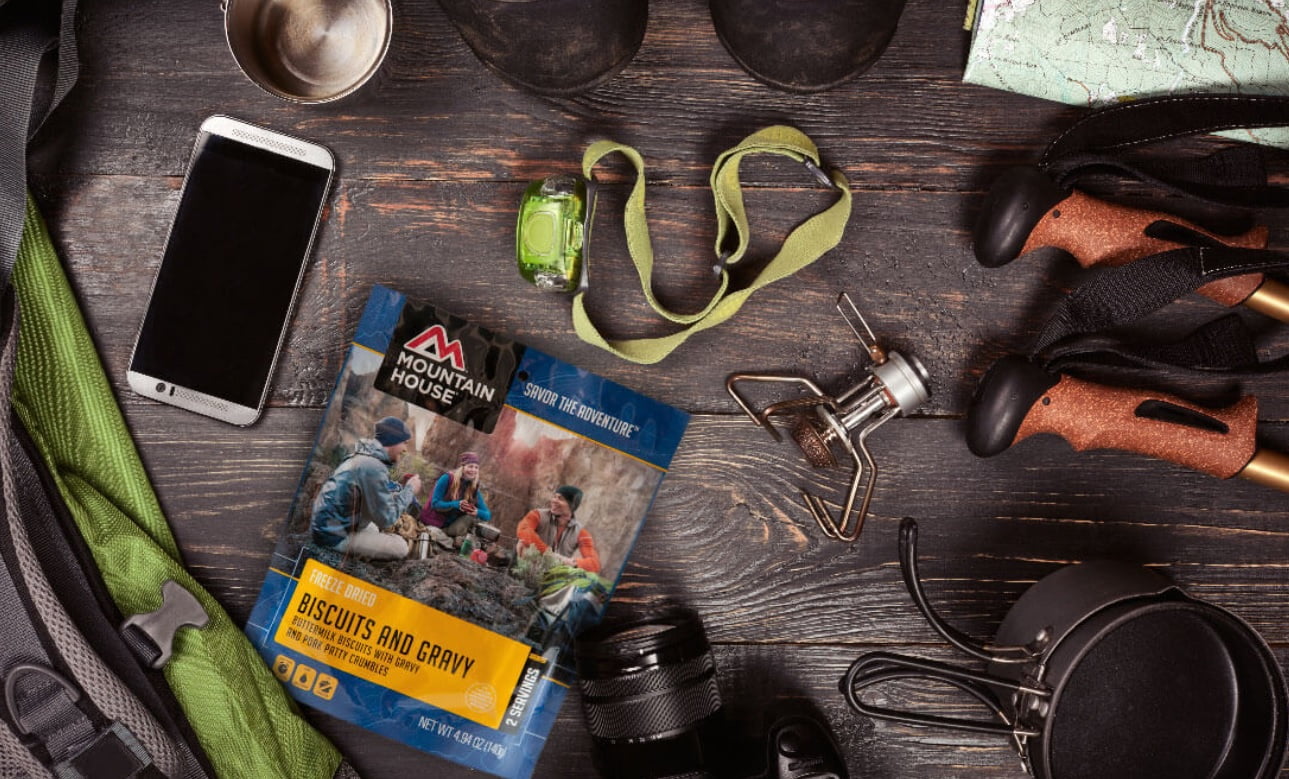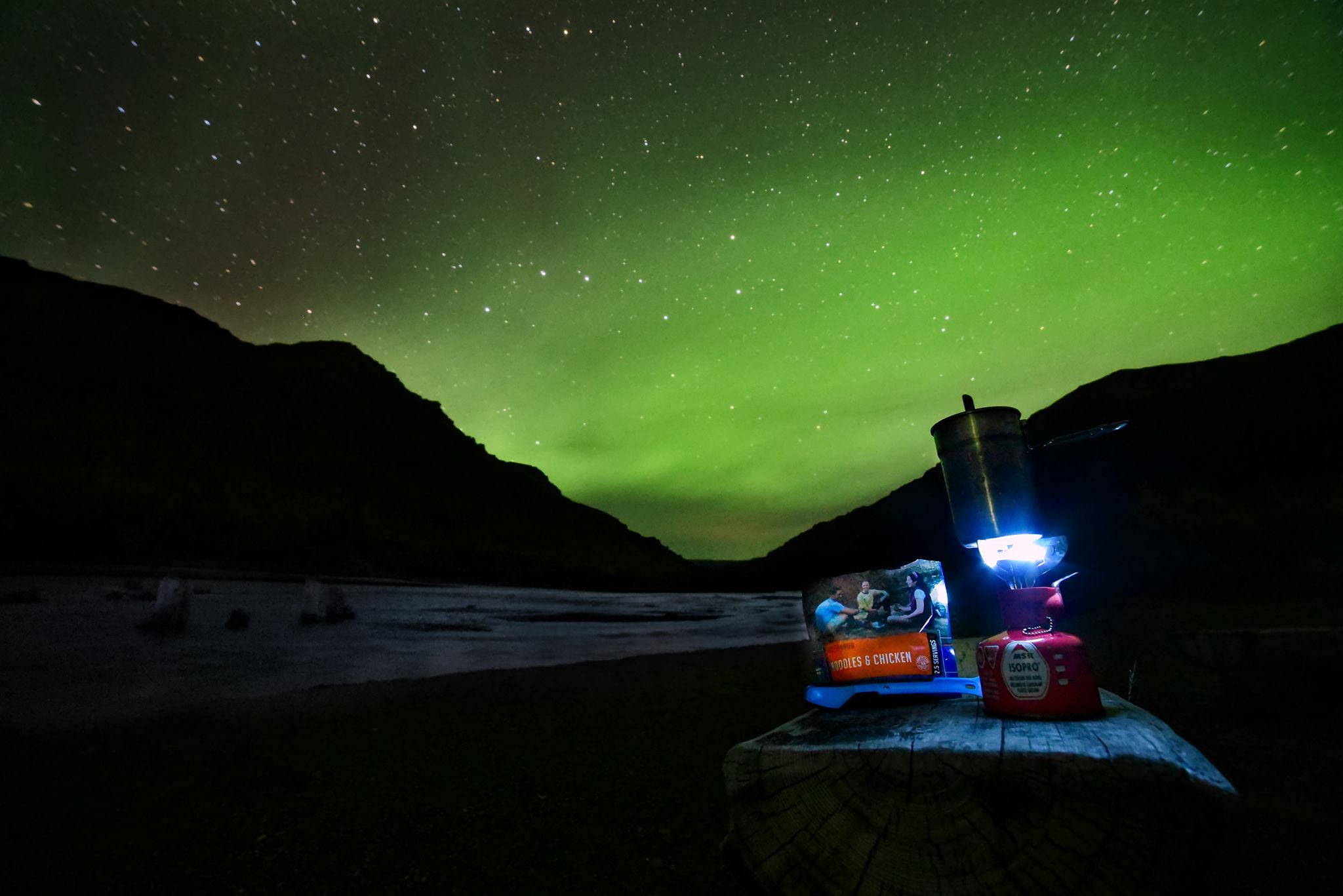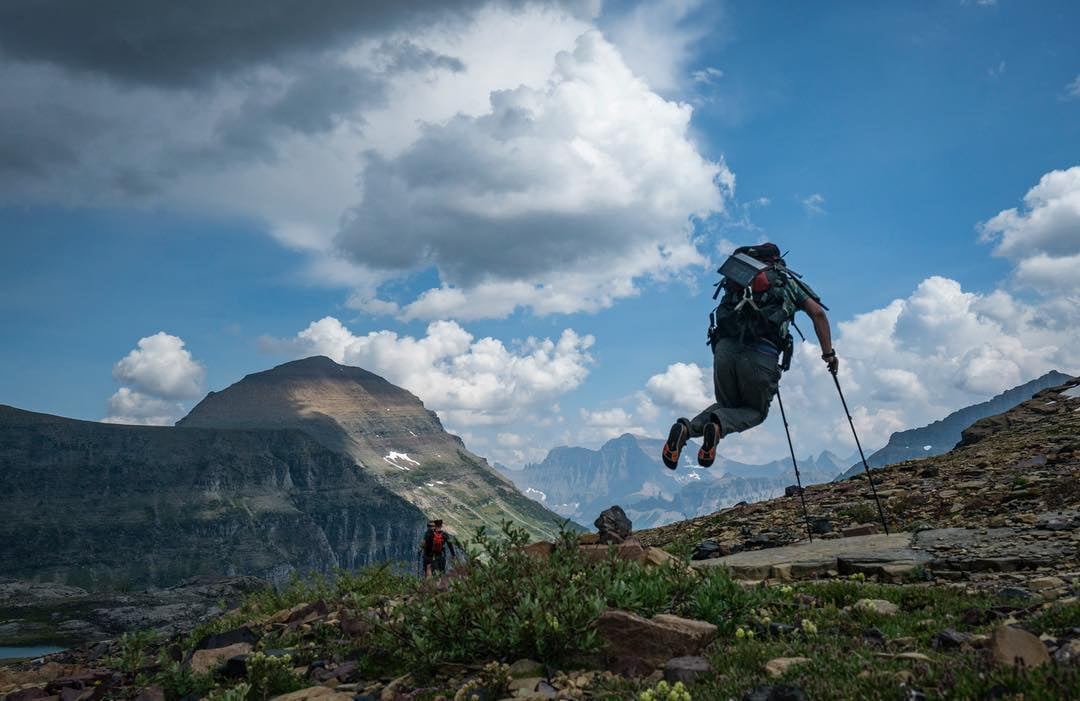
Mountaineering
BeginnerHiking
BeginnerRock Climbing
BeginnerIce Climbing
BeginnerBackcountry Skiing
BeginnerMountain Planet
12 years, Australia
What Mountaineers Eat During High-Altitude Climbs?
Before going to the main topic, it is worth establishing — what high-altitude climbing is? Let’s take as a starting point an idea that all the ascents that are above 5 thousand meters, worth attributing to high-altitude climbing. And preliminary acclimatization can be considered as the main line of clearage.
The convincible case is the ascending of Elbrus mountain, the highest point of Europe (5,642 meters) — it certainly requires acclimatization.

Photo: Facebook.com/MountainHouse
The same applies to Mont Blanc: climbing this mountain without acclimatization is fraught with serious consequences. So remember about caution and be healthy!
So what do mountaineers eat while ascending? Let us plunge into the history. You will be surprised, but only 30 years ago special products for mountaineers did not exist (with the exception of canned goods, which were invented in 1809, almost 210 from now). With might and main the first alpinists used the technologies that have proven themselves over the centuries, smoking, drying and salting the supplies.
Sure enough, canned meal could be eaten (and sometimes with pleasure). But carry it to the mountain on your back? God save us all! It is hard and long enterprise. That is, decades ago the main efforts of preparing the mountaineering expedition were spent not on the climbing as such, but on the delivery of food itself.
But even in the case of successful products handling, one more obstacle await: the nourishment is not acquired in the same way at the altitude as on the plains. It happens because the stomach bacteria quickly die at high altitude inasmuch as oxygen lack. This is often the main reason of all kinds of disorders (local food is not that guilty and it definitely isn't the only reason).

Photo: Facebook.com/MountainHouse
More facts about digestion at the altitude you can find in Mountain Plants articles:
10 THINGS YOU SHOULD AVOID DOING IN NEPAL
10 SHAME QUESTIONS ABOUT MT EVEREST
However, what we say about canned food does not apply to the sweetened condensed milk: it easily digests and contain a lot of sugar, which immediately passes to the blood and gives one a lot of energy.
But the second outdoor lover’s favorite dish — canned stewed meat - is digested much worse at an altitude. Therefore, the question where to find light-weight, tasty and nutritious products, always was acute for the Alpine Community.
And Then There Was a Vietnam
The production of first industrial sublimated meals leads us back to Vietnam War. In 1969 the military put out a request for food that tasted better, lasted longer and weighed less. And Oregon Freeze Dry Foods, LLC responded to that request and won the contract. The company continued making food for the United States Special Forces and other branches of the military ever since. Now its name is “Mountain House”, and every outdoor lover know it by heart.
ready — and the ice crystals are removed from fruits, meat, vegetables or juices. Even vodka can be sublimated!
weightless — sometimes ten to twenty times lighter than the original, without losing its natural taste.

Photo: Facebook.com/MountainHouse
According to the legends, the origins of freeze drying can be traced back to the 15th century, where a rudimentary form of freeze drying was used by the Incas.
Today every high-altitude and even renowned climber is ready to bow from the waist to the companies that produce such food. Because without these products they would not be able to set their own records.
So, what does the climber take with him to the altitude? Granola, energy bars, freeze-dried “cutlets” and “mashed potatoes”, soups, cereals and the like. The main thing is that these products should be light-weight, and their preparation should be limited of pouring the contents with boiling water only.
Does it taste as original food? Let’s face it strait: of course, this meal is different from what can be cooked from the fresh products. This "Combat Ration" has specific taste, but provides the athlete with necessary calories and vitamins. And some sublimated products are characterized by a particularly nasty flavor, but you can cope with this by testing the necessary food before the expedition.
How Mountains Became Closer
Photo: Facebook.com/MountainHouse Actually, the appearance of freeze-dried products made it possible for the alpine-style mountaineering to spread widely even in the Himalayas. Because the athlete had no longer carry everything on himself and move supplies from one camp to another. So high-altitude mountaineering had to be much obliged to the sublimates. At present the industry of freeze-dried products is on the rise. Earlier it took care of polar explorers, army and cosmonauts, but today its clients are those who go hiking, fishing, running, and all people, who honest spend time outdoors. Yes, these products are not cheap, but they save time and backpack capacity. How much it may cost? For example, two athletes during an ascent to 7-thousander can use about 20 food packs per expedition. Two packages per person per day (breakfast — omelet, lunch — snacks nuts, chocolate, energy bar; dinner - cutlet with mashed potatoes). This may run out to the sum from $400 to $500 (but no one promised that alpinism will be the cheapest sport).
And what do mountaineers eat in the base camps? As you know, the water boils at other temperatures in the mountains. For example, the boiling point at the five thousand meters high -83 degrees С. And at seven thousand -77 degrees C. Therefore, that is why in the base camps the food is prepared in high-pressure autoclaves — the pressure in which is above atmospheric. This ware saves not only time, but also fuel: if in the 1930s and 1940s the climbers spent up to five liters of gasoline to prepare a bowl of rice, now this requires a small bottle of cooking gas, which will be enough for several meals.
What is for Non-Meat Eaters?
And how do vegetarians feel in these situations? It is worth noting that it is difficult for them. People who make high-altitude climbing, but do not consume animal proteins, should carefully monitor the set of elements that they eat. You can check it by yourself: all known climbers made their most memorable expeditions before they became vegetarians (in case they became). However, the manufacturers of freeze-dried food or expedition organizers do not argue with the client's desire and also produce the vegetarian food menu card. The same applies to the gluten-free food (although people often laugh, remembering that the mankind ate wheat with gluten for the millennia, and only recently discovered that this is a diet nuisance). Nevertheless, God bless the sublimates. And we want to say to all outdoor lovers: choose anything what you can eat, and do it outdoors. And may the force be with you! *** Mountain Planet is the world’s fastest growing online Alpine Community for outdoor enthusiasts and innovative brands. MountainPlanet.com is the ultimate information destination for everything outdoors and alpine. Our goal is to make mountains safer and more accessible to the people who love them all around the world.





